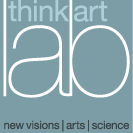What Chinese Grammar?
Interchangeability and morphogrammatics of interpretations
Abstract
To put it bluntly:
Ancient Chinese characters (signs, hieroglyphs, characters) are conceived in a transclassic setting as morphograms.
This insight is achieved with the approach of a polycontextural transformation of the categorical concept of bifunctoriality and understood as the interchangeability of locus of a character and the character itself.
Furthermore the interchangeability of Western grammatical categories to characterize Chinese characters and sentences is applied.
This is proposed with the help of a positive reading of Rolf Elberfeld studies (2003, 2007) and a negative differentiation to other approaches which are not reflecting their complicity with Western grammar.
FULL TEXT
http://www.thinkartlab.com/pkl/media/Chinese%20Grammar/What%20Chinese%20Grammar.pdf
http://www.thinkartlab.com/pkl/media/Chinese%20Grammar/What%20Chinese%20Grammar.html
Abstract
To put it bluntly:
Ancient Chinese characters (signs, hieroglyphs, characters) are conceived in a transclassic setting as morphograms.
This insight is achieved with the approach of a polycontextural transformation of the categorical concept of bifunctoriality and understood as the interchangeability of locus of a character and the character itself.
Furthermore the interchangeability of Western grammatical categories to characterize Chinese characters and sentences is applied.
This is proposed with the help of a positive reading of Rolf Elberfeld studies (2003, 2007) and a negative differentiation to other approaches which are not reflecting their complicity with Western grammar.
FULL TEXT
http://www.thinkartlab.com/pkl/media/Chinese%20Grammar/What%20Chinese%20Grammar.pdf
http://www.thinkartlab.com/pkl/media/Chinese%20Grammar/What%20Chinese%20Grammar.html


0 Comments:
Post a Comment
Subscribe to Post Comments [Atom]
<< Home